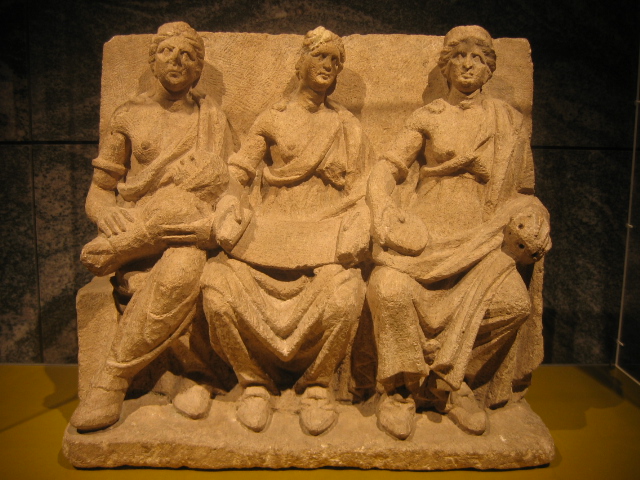Matres
The Matres and Matronae were prominent female deities venerated across a vast swathe of northwestern Europe. Their worship flourished from the 1st-5th c. AD, leaving behind a rich legacy of inscriptions and votive offerings.

These “Mothers” were not solitary figures, but rather depicted in trios on votive offerings – special dedications to the divine – and altars. These artworks often featured inscriptions, offering clues to the worshippers’ reverence. Interestingly, the areas where the Matres and Matronae were venerated coincided with Roman military presence, particularly in regions of Germania, eastern Gaul, and northern Italy. This overlap hints at a possible exchange of religious ideas along the frontiers of the Roman Empire.

While their core veneration lies in northwestern Europe, the presence of the Matres and Matronae extends far beyond. These “Mothers” were honored across vast swathes of the Roman Empire, wherever its legions left their mark. Votive reliefs and inscriptions dedicated to them have been discovered in unexpected locations, including southeast Gaul, Spain, Portugal, and even as far east as Pannonia. This widespread reverence suggests a remarkable adaptability of the Matres and Matronae cult, potentially resonating with diverse populations within the Roman world.

The concept of the triple goddess, a powerful female deity represented in a threefold nature, has captivated cultures across vast stretches of ancient Europe and beyond. This enduring motif transcends geographical boundaries, appearing in diverse pantheons.
- We encounter the Fates, the weavers of destiny in Greek mythology, often depicted as three sisters – Clotho (who spins the thread of life), Lachesis (who measures its length), and Atropos (who cuts it).
- Similarly, the Erinyes, also known as the Furies, personified vengeance and were often depicted as a terrifying trio.
- In contrast, the Charites, or Graces, embodied charm, beauty, and the arts, represented by three goddesses: Aglaia (glory), Euphrosyne (joy), and Thalia (bloom).
- Celtic cultures boasted their own triple goddesses, like the Morrígan, a powerful figure associated with war, fate, and prophecy.
Looking beyond Europe, we find the intriguing concept of the Tridevi in Hinduism, where the three supreme goddesses – Saraswati (wisdom), Lakshmi (prosperity), and Durga (protection) – represent essential aspects of the divine feminine.

Archaeologist Rudolf Simek offers valuable insights into the depictions of the Matres and Matronae. He observes intriguing details that may hold symbolic meaning. For instance, the presence of loose hair on some figures might symbolize maidenhood, while others adorned with headdresses could represent married women. This potential distinction in hairstyles hints at the goddesses’ roles encompassing various stages of a woman’s life. The inclusion of snakes, often associated with the underworld or the souls of the dead, adds another layer of complexity. Simek suggests they might connect the Matres and Matronae to the cycles of life and death. Finally, the most endearing depictions showcase these goddesses with children and, interestingly, depictions of diapers. These details strongly suggest a protective role over families, possibly extending to a specific function as midwives, safeguarding mothers and their newborns.

